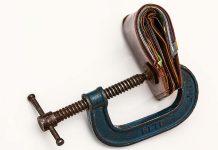Handsome pay-outs for mining shareholders as strong underlying earnings deliver record interims for investors…
By Darren Parkin
A SURGE in commodity prices and a rush in demand from China has fuelled soaring profits for the Anglo-Australian mining firm Rio Tinto.
Half-year declarations from the massive FTSE 100 group also reveal shareholders can expect a record payday of 110 US cents per share, totalling around $2bn.
It’s 50,000 employees were also told the company would be doubling its existing $500m share buyback scheme with the aim of acquiring a targeted $1bn of its own shares before the year is out, while shareholders can expect returns equating to approximately 75% of earnings.
It’s not just the record dividends that are being celebrated, as market-watchers will be quick to point out that Rio Tinto’s impressive mid-year figures clearly herald an end to two years of crippling downturn that, were it not for the colossal international footprint of the group, could easily have brought the firm to its knees.
2014 and 2015 in particular were shrouded in despair for the global mining markets, with the downturn laying waste to scores of smaller operations. For Rio Tinto, its ability to shift currency and resources around its bases throughout the world has allowed it to ride out an unprecedented storm, and emerge strong.
Add to that the strengthening of iron ore prices over the last 12 months – a commodity which dominates the Australian arm of Rio Tinto’s mining operations – as well as the voracious demand from the Chinese market, and it’s clear to see the industry has plenty of wind in its sails.
As bosses continue apace to rein in costs which have built during the downturn, net debt for the group fell by $2bn to $7.6bn, while pre-tax leapt considerably to 44.96bn – a jump of 57%. Revenue, meanwhile, held a steady climb of 20%, finishing the half-year on $19.3bn.
Shareholders already celebrating may need more Champagne later this year with accountants expected to bank almost $3bn from the sale of its Australian coal mines to China’s Yancoal.
Announcing the half-year figures, Rio’s CEO – Jean-Sebastian Jacques – was upbeat about what they were delivering to investors.
“By driving performance, focusing on cash, and allocating it with discipline, we are delivering superior cash returns to our shareholders,” he said.
“These are strong results – operating cash flow was $6.3bn and we met our $2bn cash cost reduction target six months early.
“We are now shifting gear to focus on untapped value from our productivity programme and continue to strengthen our portfolio to build higher returns for the future.
“When you go through the results that we’ve published, I believe there is always room for improvement, but I believe we’ve got the chemistry right here.”
Rio Tinto, buoyed by its ascending market position, now has an interesting dilemma on its hands – what to do with all its sudden wealth.
“But what a great problem to have in the great scheme of things,” commodities analyst Zena Riley told Business Vision.
“Rio Tinto has gone from being a sick animal carelessly staggering its way up to the slaughterhouse door to being a cash cow – this is a group in rude health.
“The choice presented to Jean-Sebastien Jacques now is whether he ramps up the company’s investment portfolio by digging bigger, deeper mines, or sends more cash back into the wallets of the shareholders.
“My guess would be a bit of both, but we’ll have to wait and see – he is his own man and he clearly knows what he’s doing.”
It’s unlikely Rio Tinto will look towards acquisitions. The brand is still recovering from a string of financial setbacks and several bad deals which forced the then CEO Tom Albanese to soak up more than $14bn of write-downs before he was asked to tender his resignation in 2013.
Jacques has shown himself to be a cautious player and, while he’s had a stunningly good opening six months to 2017, the outlook still carries an air of uncertainty that would steer a wise man into cautious thinking. Given the amount shareholders have suddenly received at the end of a barren patch, it’s likely that the vast majority of them will welcome the stability that caution so often brings.
In Australia, where Rio Tinto has around 200,000 shareholders, Chief Financial Officer Chris Lynch said that while the dividend was a good outcome for shareholders, the group still had some catching up to do in the second half of 2017.
“The fundamental thing is that the businesses are in good shape, and our main market – China – has been very strong and showing good resilience,” he said.
“So, all up, we’re in a good position. We can expect there’ll be volatility in prices, but we work on the things that we think we can control.
“Prices generally have been reasonably strong and we’ve had a pretty good iron ore pricing, considering how volatile it has been in the past.”
Meanwhile, Rio Tinto’s London operation suffered slightly to the end of the half-year report, with shares falling 2.3% to £34.19 (before interest and tax depreciation). It’s likely, though, that Rio Tinto chiefs will be comfortable in allowing its UK operation to tread water while they focus on the momentum of its Australian market.
The benchmark price of iron ore, which accounts for the great majority of its operation in the southern hemisphere, has hovered around the $74.45 per tonne mark for much of 2017, compared to $52.14 the previous year. The price isn’t showing any signs of diminishing any time soon, so executives will be content to have the Australian division subsidise the UK market until it picks up.
This managed stability means further good news for long-term investors as it leaves the growth guidance forecasts unchanged. The result of which should see Rio Tinto invest $5bn in capital expenditure by the close of 2017, increasing to $5.5bn for both 2018 and 2019.
Some unknown quantities on the horizon could also see growth with mining operations in Oyu Tolgoi – deep within the Gobi desert – delivering good copper yields, as well as the Amrun project in Australia where the company has invested $1.9bn to build a mine and port beside one of the world’s premier bauxite (aluminium ore) deposits.































